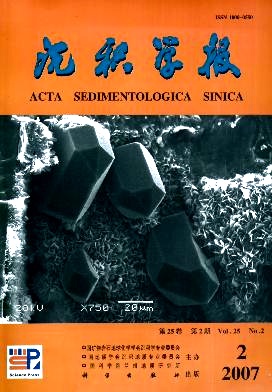Classification Methods for Development Period of Fractures and Its Application: a case study from Budate Group of Hailaer Basin
- Received Date: 1900-01-01
- Rev Recd Date: 1900-01-01
- Publish Date: 2007-04-10
-
Key words:
- development period of fractures
Abstract: Taking fractured reservoir of Budate Group in the buried hill of Sudeerte structural zone, Hailaer basin as an example, this paper discusses classification methods for development period of fractures. Based on the core observation and description, the stable isotopic analysis, fluid inclusion homogenization temperature of infilled components in fractures and acoustic emission technology, and combined with regional structural evolution history, the development period of fractures is researched. The result indicates about three stages of structural break occur in Budate Group. The fractures activity in stageⅠrelates to NantunDamoguaihe movement. The fractures are filled by
mainly caleite, of which the forming temperature is between 72 and 76 degrees. In this stage, hydrocarbon inclusions are found but their maturity is low. The fractures of stageⅡare the result of regional extension movement of Yimin phase. StageⅡis subdivided into two stages. In the first stage, fractures are filled by calcite, of which the forming temperature is between 117 and 132 degrees. In the second stage, fractures are filled by microcrystallineaplite quartz, which forming temperature is between 120 and 154 degrees. Relatively, the hydrocarbon maturity of stageⅡboosts up in evidence. The fractures of stage Ⅲ come into being in violent uplift movement of Yimin telophase. The fillings of fractures are microcrystallineaplite calcite and quartz, of which the forming temperature is between 89 and 110 degrees. The hydrocarbon maturity weakens. It is significant for rebuilding evolution history fractures to classify the development period of fractures
| Citation: | REN Lihua. Classification Methods for Development Period of Fractures and Its Application: a case study from Budate Group of Hailaer Basin[J]. Acta Sedimentologica Sinica, 2007, 25(2): 253-260. |






 DownLoad:
DownLoad: